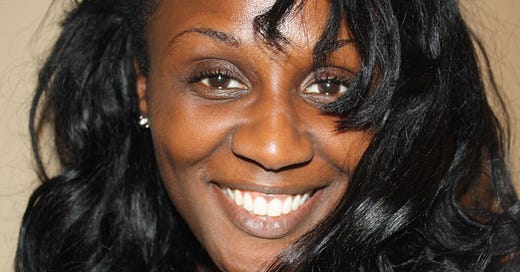How aging differs across all skin types
Dr. Marissa Joseph began her talk at Skin Spectrum Summit in Toronto by examining the belief that there is a difference in how individuals of different races age (550 words, 3 minutes)
Thinking about mechanisms of aging is important across all skin types, according to Dr. Marissa Joseph, who began her 2019 talk at Skin Spectrum Summit in Toronto by examining the belief that there is a difference in how individuals of different races age.

“Is that really true?” she asked before going on to contrast the features of aging seen in different skin types.
She spoke about intrinsic aging and extrinsic aging, making note of the extrinsic causes of aging, such as UV exposure and smoking.
But, she said, when comparing Fitzpatrick skin types, darker skin types tend to experience facial aging at a decreased rate due to intrinsic factors.
According to a survey of women aged 18 to 75, “African-American women reported advanced signs of facial aging on average 10 to 20 years later than their Caucasian counterparts,” she said.
Forehead lines in African-American women were reported in their 50s, tear troughs did not appear until their 60s and crow’s feet finally appeared in their 70s, she said.
Approximately 70 per cent of African-American women aged 70 to 79 reported that they still had not observed lines around their mouths.
“There really is a delayed onset of things like wrinkles,” she said.
Dr. Joseph went on to rank the rate of wrinkle onset by race: Black patients experienced the slowest onset, followed by Hispanic patients, Asian patients, and finally, White patients.
The reason that darker-skinned patients experience a decreased rate of onset may be due to “a protective effect of increased fibroblast activity,” she said.
This may also explain the increased risk of keloids in darker-skinned patients, she said. This does not mean that patients with darker skin tones don’t seek or require treatments or improvements for anti-aging, she said.
Dermatosis papulosa nigra, small dark keratoses that appear on the face and neck, was one of the examples she gave of an aging condition specific to people with darker skin.
“There are nuances to addressing their specific aging concerns,” she said.
The takeaway: As the spectrum of skin colour moves from lighter to darker, the rate of facial skin aging tends to decrease.
FROM THE LITERATURE ON SKIN AGING IN DARKER SKIN
Aging in skin of color: Disruption to elastic fiber organization is detrimental to skin’s biomechanical function
As it ages, skin of color loses dermal–epidermal junction convolution, elastic fiber arrangement is disrupted and undergoes a reduction of collagen organization. Despite increased melanin leves, these intrinsic and photoaging effects are harmful to skin of colour.
Development of a Global Subjective Skin Aging Assessment score from the perspective of dermatologists
Researchers surveyed dermatologists on their use of a Global Subjective Skin Aging Assessment (GS2A2) to assign a numerical score to the effects of dermatologic intervention on signs of aging. The assessment tool was found to be of value for evaluating skin aging in clinical practice and research to compare treatment outcomes.
Topical growth factors for the treatment of facial photoaging: A clinical experience of eight cases
After micorneeding, topical application of growth factors reduced signs of photoaging, by improving skin texture in Fitzpatrick skin types III and IV.
Submit a question to a Skin Spectrum Summit presenter.

Skin Spectrum Summit 2020 will be held in three sessions: Thursday, October 1 at 7:30pm, Saturday, October 3 at 10:30am, and Tuesday, October 6 at 7:30pm. Please register here.
On Day 1 of Skin Spectrum Summit, Dr. Monica Li from Vancouver will speak on the subject of aesthetic injectable considerations in the Asian patient. If there are any questions you’d like ask Dr. Li, please submit them here.
AT THE INTERSECTION OF SKIN & SOCIETY
Protesters in South Africa (pictured below) damaged a chain of pharmacies that had recently launched advertisements portraying African textured hair negatively and White hair as positive. The pharmacy chain, Clicks, removed the advertisements from their social media pages and apologized. The protest leader, Julius Malema responded by saying “White people insult us and then they apologise, they think that’s the end. We are no longer going to accept any apology which is not accompanied by justice.” Read the whole story here.

THIS WEEK AHEAD
September is Acne Awareness Month
Monday, Sept. 14- Tuesday, Sept. 15 Global Congress on Pathology & Laboratory Medicine (GCPLM)
Monday, Sept. 14- Tuesday, Sept. 15 International Congress on Advances in Clinical Research and Trials
Something to think about during the week ahead:

NEXT WEEK
Dr. Jenna Lester speaks about her study on the lack of images of skin of colour in Covid-19 studies. View our video on the topic below. Subscribe to Skin Spectrum Weekly and have each issue sent directly to your phone or inbox.
Don’t forget to register now for the Skin Spectrum Summit 2020 Webinar Series, beginning October 1, 2020. Sign up here



